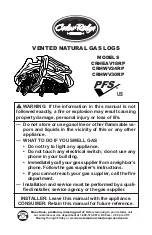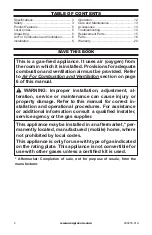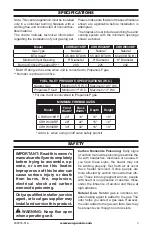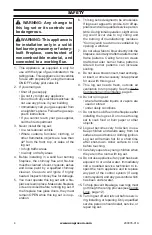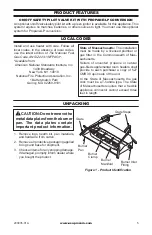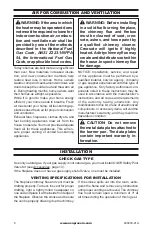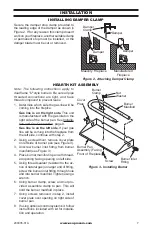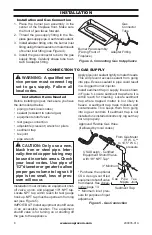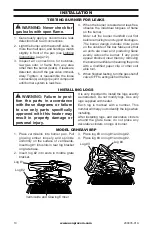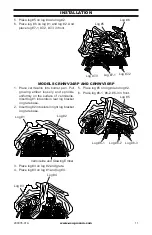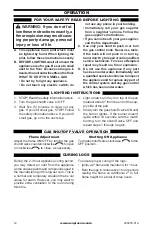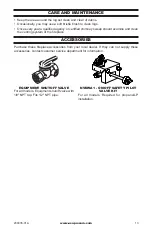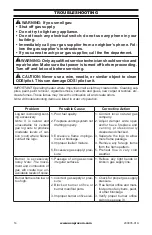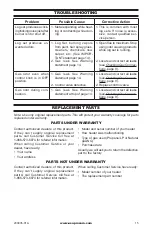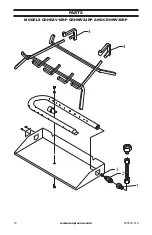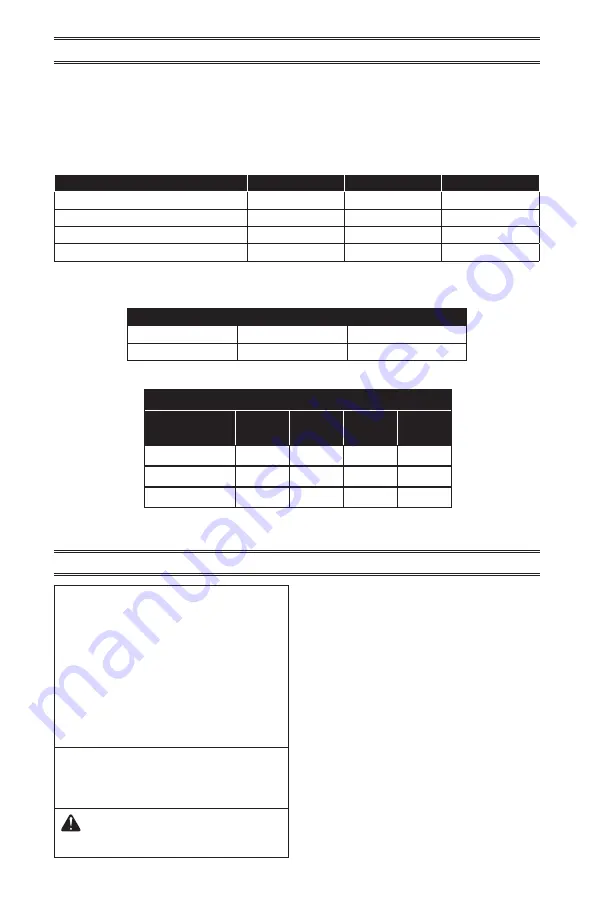
www.usaprocom.com
3
200035-01A
SPECIFICATIONS
Note: This vented appliance must be installed
only in a solid-fuel burning fireplace with a
working flue and constructed of noncombus-
tible material.
The charts indicate technical information
regarding the installation of your gas log set.
Please make sure that all of the specifications
shown are applicable before installation is
attempted.
The fireplace must include a working flue and
venting system with the minimum openings
shown as below.
Model
CRHEAV18RP
CRHWV24RP
CRHWV30RP
Gas Type
Natural
Natural
Natural
BTU Input*
45,000 BTU/Hr
55,000 BTU/Hr
65,000 BTU/Hr
Minimum Vent Opening
8" Diameter
8" Diameter
8" Diameter
Burner Orifice (Propane/LP)**
205
225
242
* Btu/Hr Rating is the same when unit is converted to Propane/LP gas.
** Number is printed on orifice.
MINIMUM FIREBOX SIZES
Model
Front
Width*
Back
Width * Depth
Height
CRHEAV18RP
24"
18"
15"
18"
CRHWV24RP
28"
22"
15"
18"
CRHWV30RP
34"
32"
16"
19"
FUEL INLET PRESSURE SPECIFICATIONS (W.C.)
Natural Gas
Minimum 5.5" W.C. Maximum 10.5" W.C.
Propane/LP Gas*
Minimum 11" W.C. Maximum 13" W.C.
* Add 4 in. when using on/off valve safety pilot kit
* For use if unit is converted to Propane/LP gas.
SAFETY
IMPORTANT: Read this owner’s
manual carefully and completely
before trying to assemble, op-
erate, or service this heater.
Improper use of this heater can
cause serious injury or death
from burns, fire, explosion,
electrical shock and carbon
monoxide poisoning.
Only a qualified installer, service
agent, or local gas supplier may
install and service this product.
WARNING: Keep flue open
when operating unit.
Carbon Monoxide Poisoning:
Early signs
of carbon monoxide poisoning resemble the
flu, with headaches, dizziness or nausea. If
you have these signs, the heater may not
be working properly. Get fresh air at once!
Have heater serviced. Some people are
more affected by carbon monoxide than oth
-
ers. These include pregnant women, people
with heart or lung disease or anemia, those
under the influence of alcohol and those at
high altitudes.
Natural Gas:
Natural gas is odorless. An
odor-making agent is added to the gas. The
odor helps you detect a gas leak. However,
the odor added to the gas can fade. Gas may
be present even though no odor exists.

